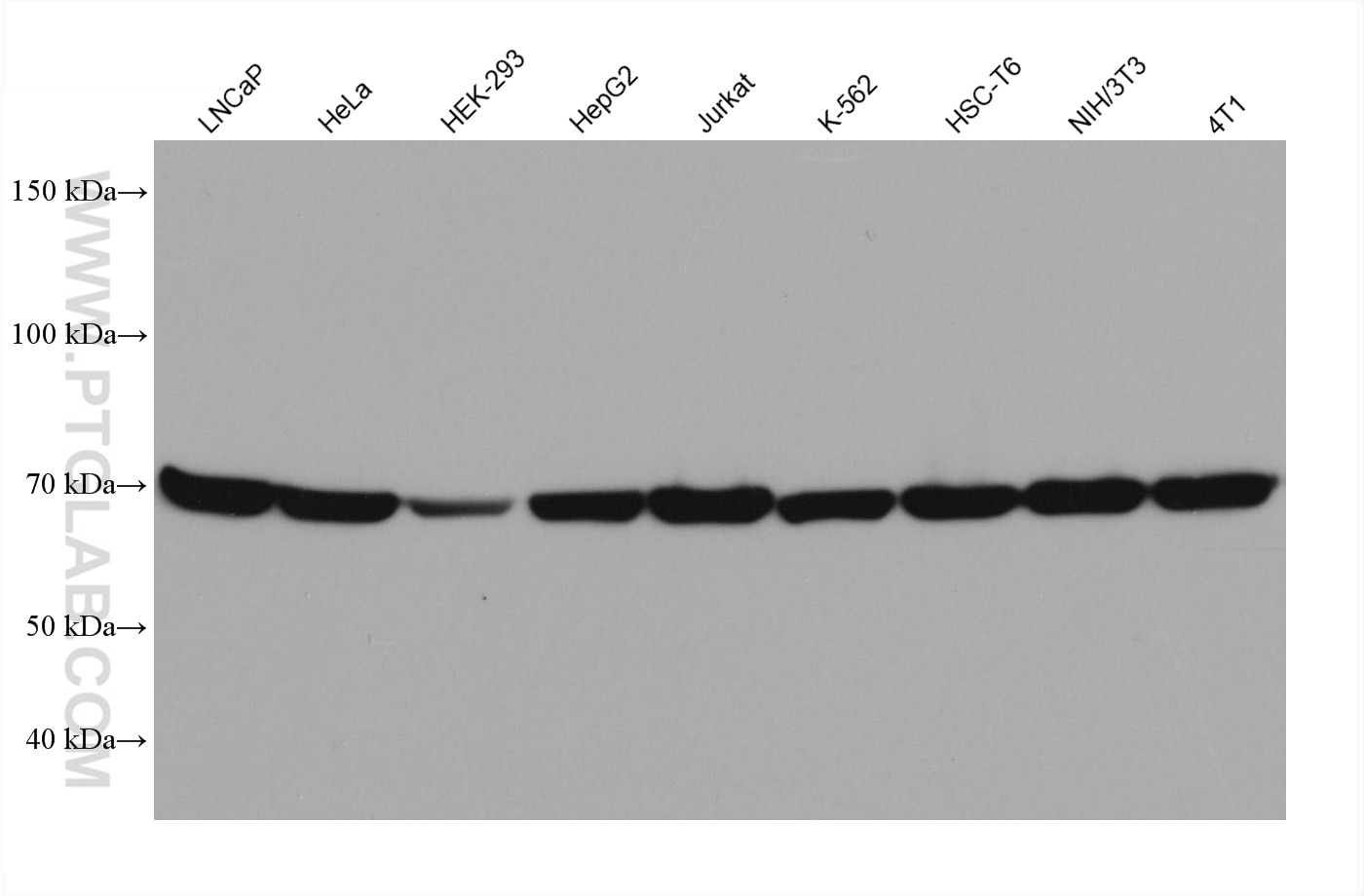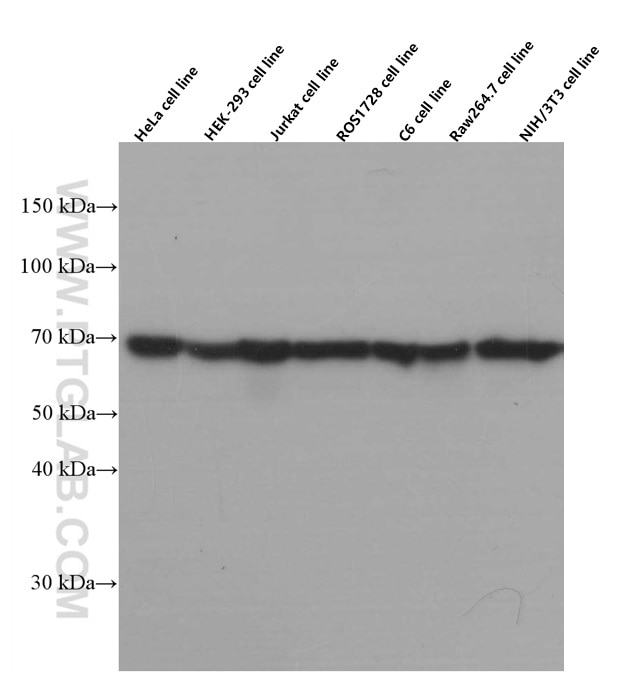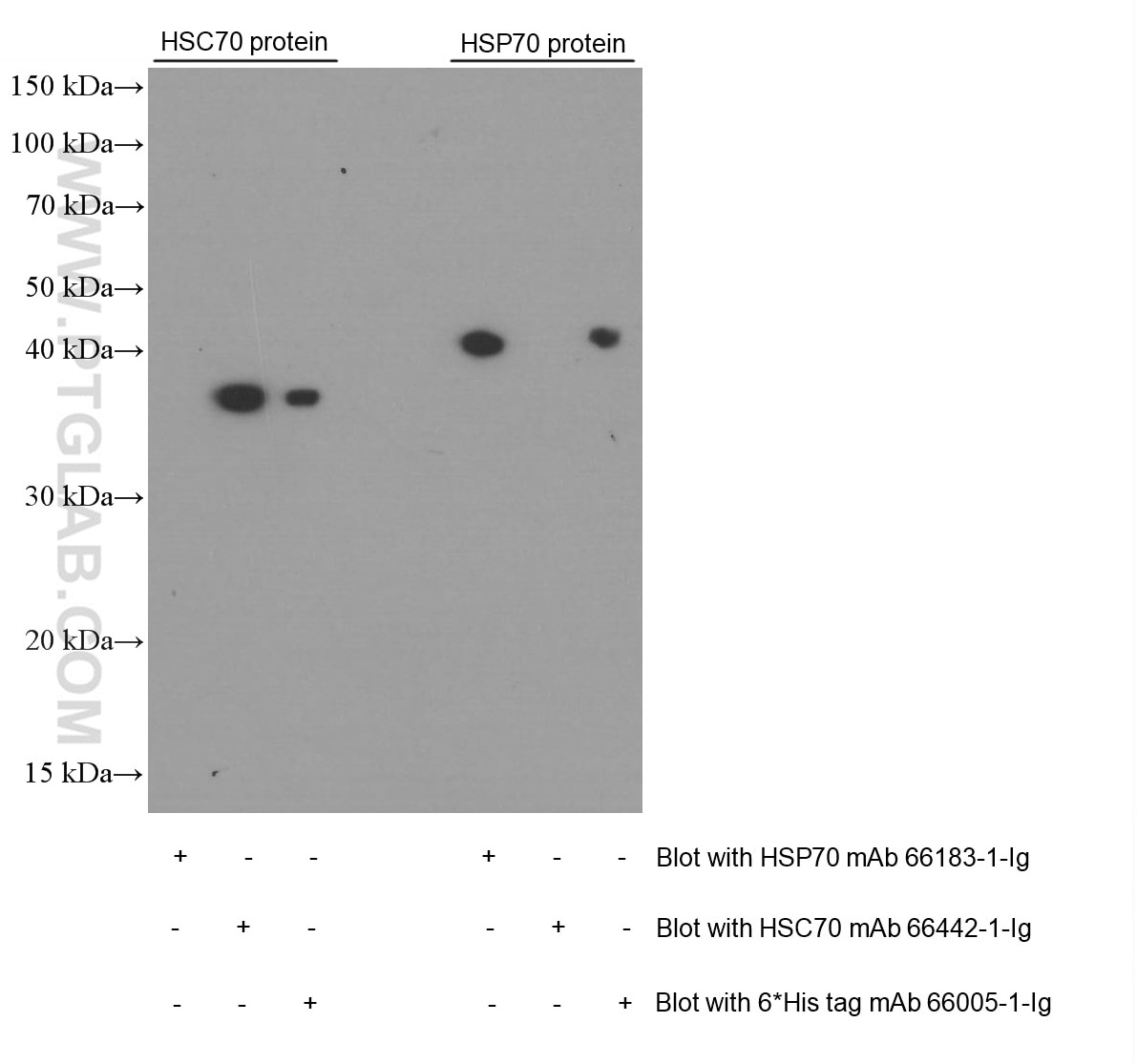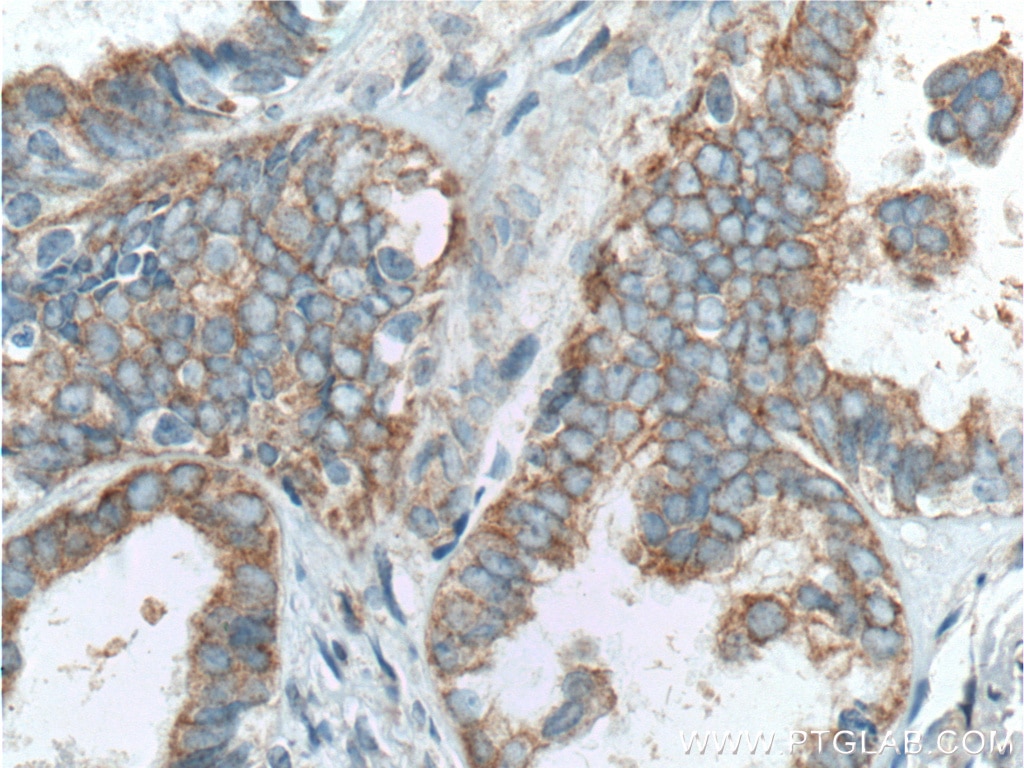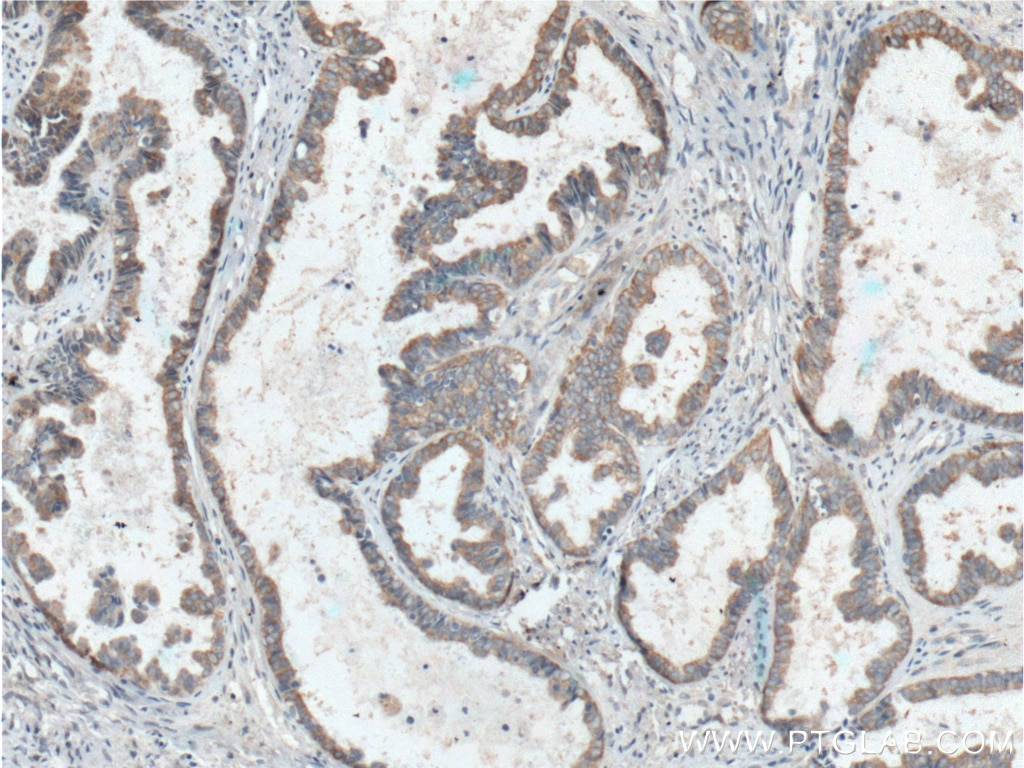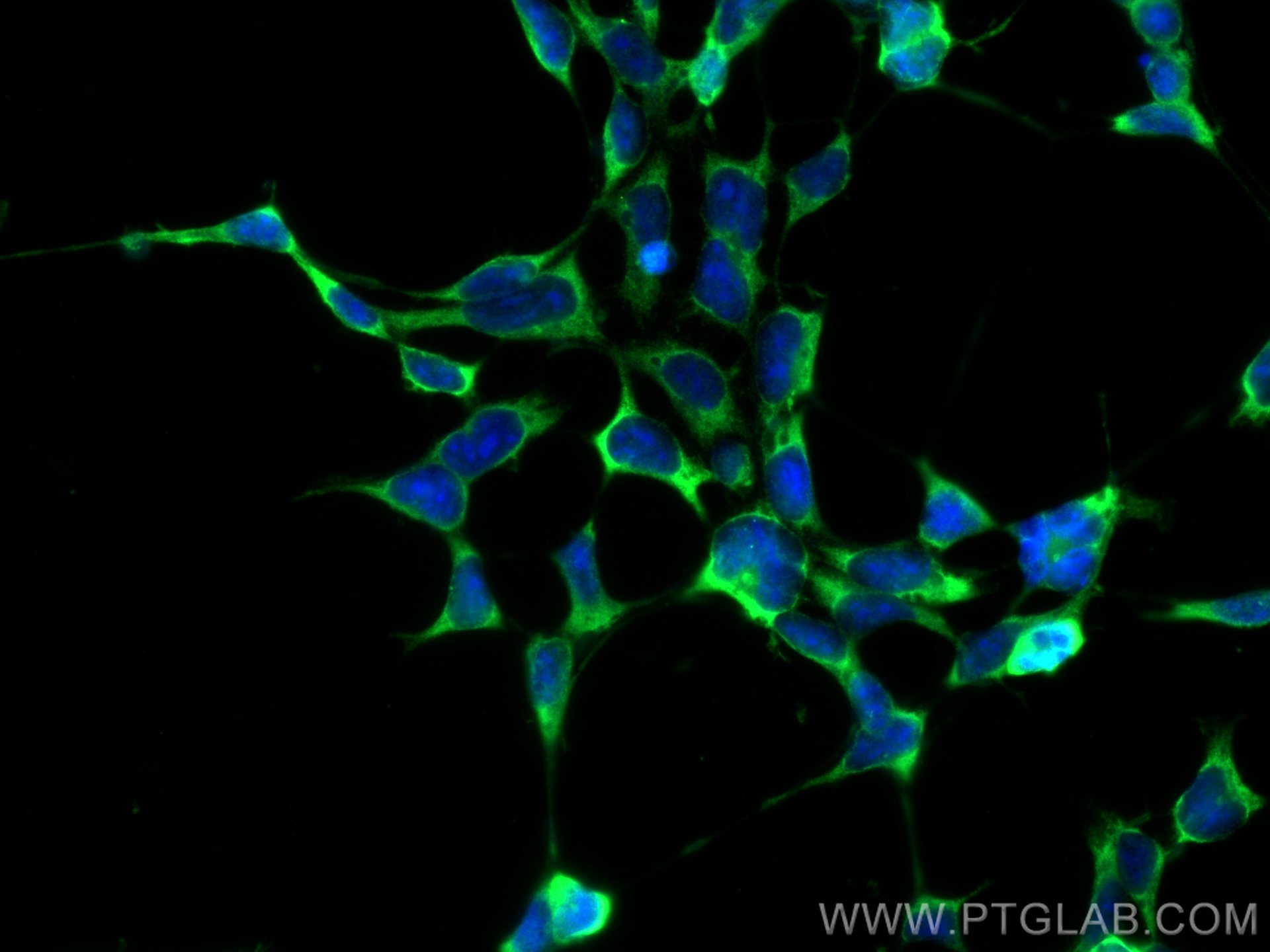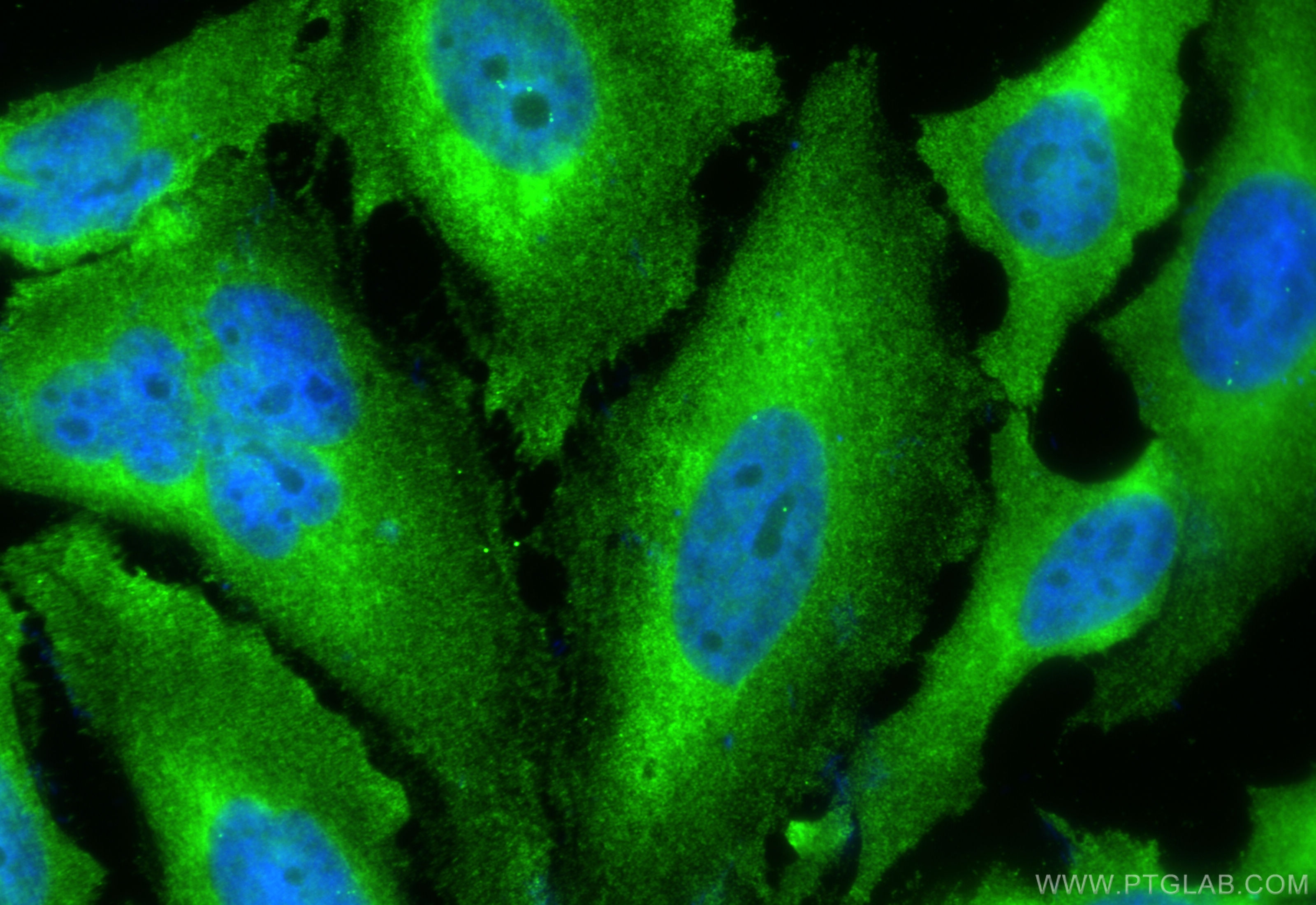- Phare
- Validé par KD/KO
Anticorps Monoclonal anti-Hsc70
Hsc70 Monoclonal Antibody for WB, IHC, IF/ICC, ELISA
Hôte / Isotype
Mouse / IgG1
Réactivité testée
Humain, rat, souris et plus (3)
Applications
WB, IHC, IF/ICC, ELISA
Conjugaison
Non conjugué
CloneNo.
1A4B3
N° de cat : 66442-1-Ig
Synonymes
Galerie de données de validation
Applications testées
| Résultats positifs en WB | cellules LNCaP, cellules 4T1, cellules C6, cellules HEK-293, cellules HeLa, cellules HepG2, cellules HSC-T6, cellules Jurkat, cellules K-562, cellules NIH/3T3, cellules RAW 264.7, cellules ROS1728, Protéine recombinante |
| Résultats positifs en IHC | tissu de tumeur ovarienne humain il est suggéré de démasquer l'antigène avec un tampon de TE buffer pH 9.0; (*) À défaut, 'le démasquage de l'antigène peut être 'effectué avec un tampon citrate pH 6,0. |
| Résultats positifs en IF/ICC | cellules HeLa, cellules HEK-293 |
Dilution recommandée
| Application | Dilution |
|---|---|
| Western Blot (WB) | WB : 1:20000-1:100000 |
| Immunohistochimie (IHC) | IHC : 1:50-1:500 |
| Immunofluorescence (IF)/ICC | IF/ICC : 1:200-1:800 |
| It is recommended that this reagent should be titrated in each testing system to obtain optimal results. | |
| Sample-dependent, check data in validation data gallery | |
Applications publiées
| WB | See 9 publications below |
| IF | See 3 publications below |
Informations sur le produit
66442-1-Ig cible Hsc70 dans les applications de WB, IHC, IF/ICC, ELISA et montre une réactivité avec des échantillons Humain, rat, souris
| Réactivité | Humain, rat, souris |
| Réactivité citée | Chèvre, Humain, porc, singe, souris |
| Hôte / Isotype | Mouse / IgG1 |
| Clonalité | Monoclonal |
| Type | Anticorps |
| Immunogène | Hsc70 Protéine recombinante Ag17910 |
| Nom complet | heat shock 70kDa protein 8 |
| Masse moléculaire calculée | 70 kDa |
| Poids moléculaire observé | 70 kDa |
| Numéro d’acquisition GenBank | BC007276 |
| Symbole du gène | HSC70 |
| Identification du gène (NCBI) | 3312 |
| Conjugaison | Non conjugué |
| Forme | Liquide |
| Méthode de purification | Purification par protéine G |
| Tampon de stockage | PBS with 0.02% sodium azide and 50% glycerol |
| Conditions de stockage | Stocker à -20°C. Stable pendant un an après l'expédition. L'aliquotage n'est pas nécessaire pour le stockage à -20oC Les 20ul contiennent 0,1% de BSA. |
Informations générales
HSPA8 (also known as HSC70) is a member of the HSPA (HSP70) family of heat-shock proteins which are highly conserved chaperons implicated in protein folding, protein refolding, protein transport, and protein targeting. HSPA8 is a constitutively expressed cytosol/nuclear protein able to translocate between cytoplasm and nucleus. Recently it has been reported that HSPA8 can interact with α-synuclein, the critical pathological protein of Parkinson's disease, indicating its implication in neurodegenerative disease. (PMID: 21832061)
Protocole
| Product Specific Protocols | |
|---|---|
| WB protocol for Hsc70 antibody 66442-1-Ig | Download protocol |
| IHC protocol for Hsc70 antibody 66442-1-Ig | Download protocol |
| IF protocol for Hsc70 antibody 66442-1-Ig | Download protocol |
| Standard Protocols | |
|---|---|
| Click here to view our Standard Protocols |
Publications
| Species | Application | Title |
|---|---|---|
J Neuroinflammation p38-TFEB pathways promote microglia activation through inhibiting CMA-mediated NLRP3 degradation in Parkinson's disease. | ||
Microbiol Spectr Heat Shock Protein Member 8 (HSPA8) Is Involved in Porcine Reproductive and Respiratory Syndrome Virus Attachment and Internalization. | ||
Cell Commun Signal Discovery of LAMP-2A as potential biomarkers for glioblastoma development by modulating apoptosis through N-CoR degradation. | ||
J Virol Heat shock protein A1 inhibits the replication of foot-and-mouth disease virus by degrading viral RNA polymerase 3D through chaperone-mediated autophagy | ||
FEBS Open Bio A curcumin analogue GO-Y030 depletes cancer stem cells by inhibiting the interaction between the HSP70/HSP40 complex and its substrates | ||
Ecotoxicol Environ Saf PARP1 promotes NLRP3 activation via blocking TFEB-mediated autophagy in rotenone-induced neurodegeneration |
